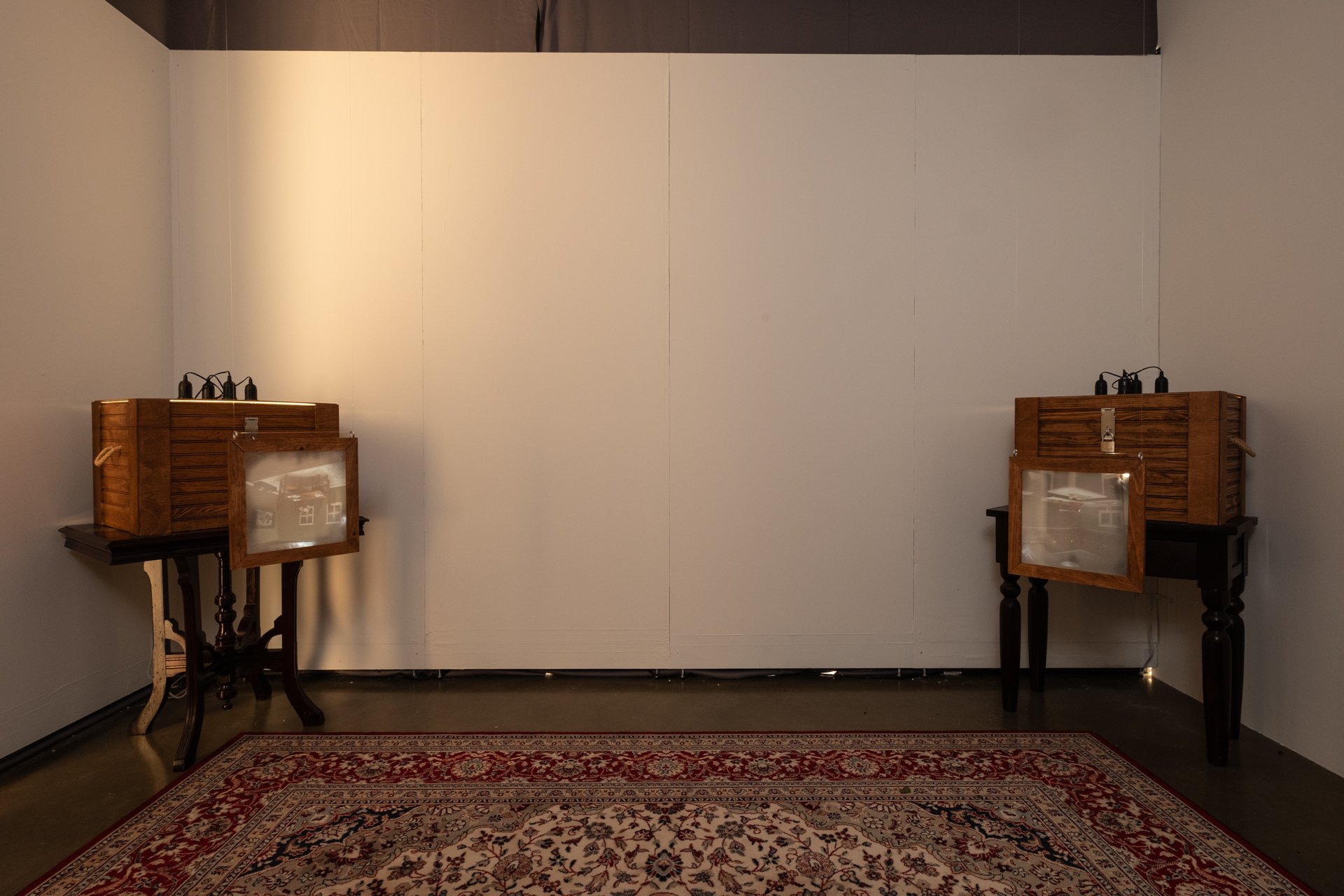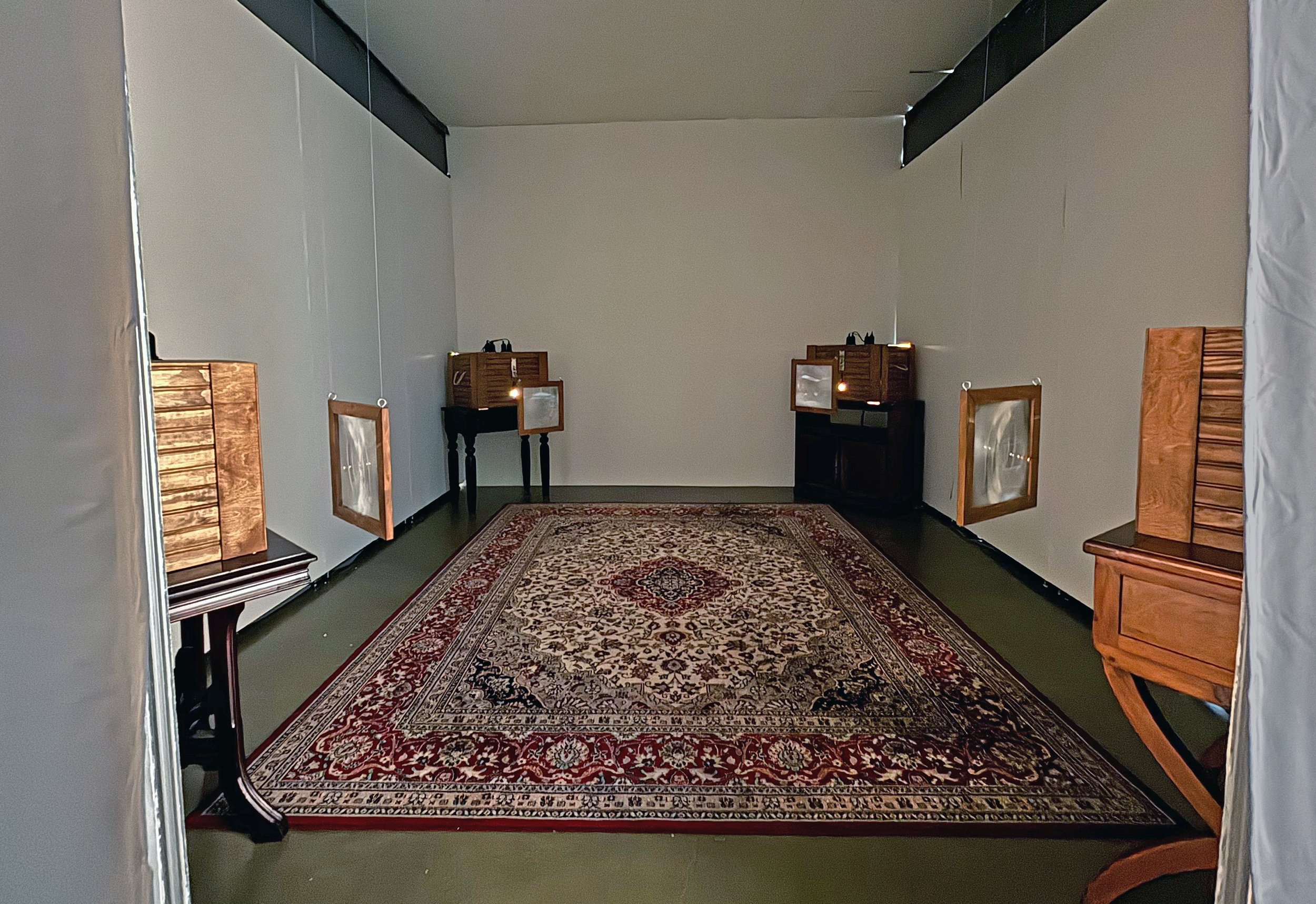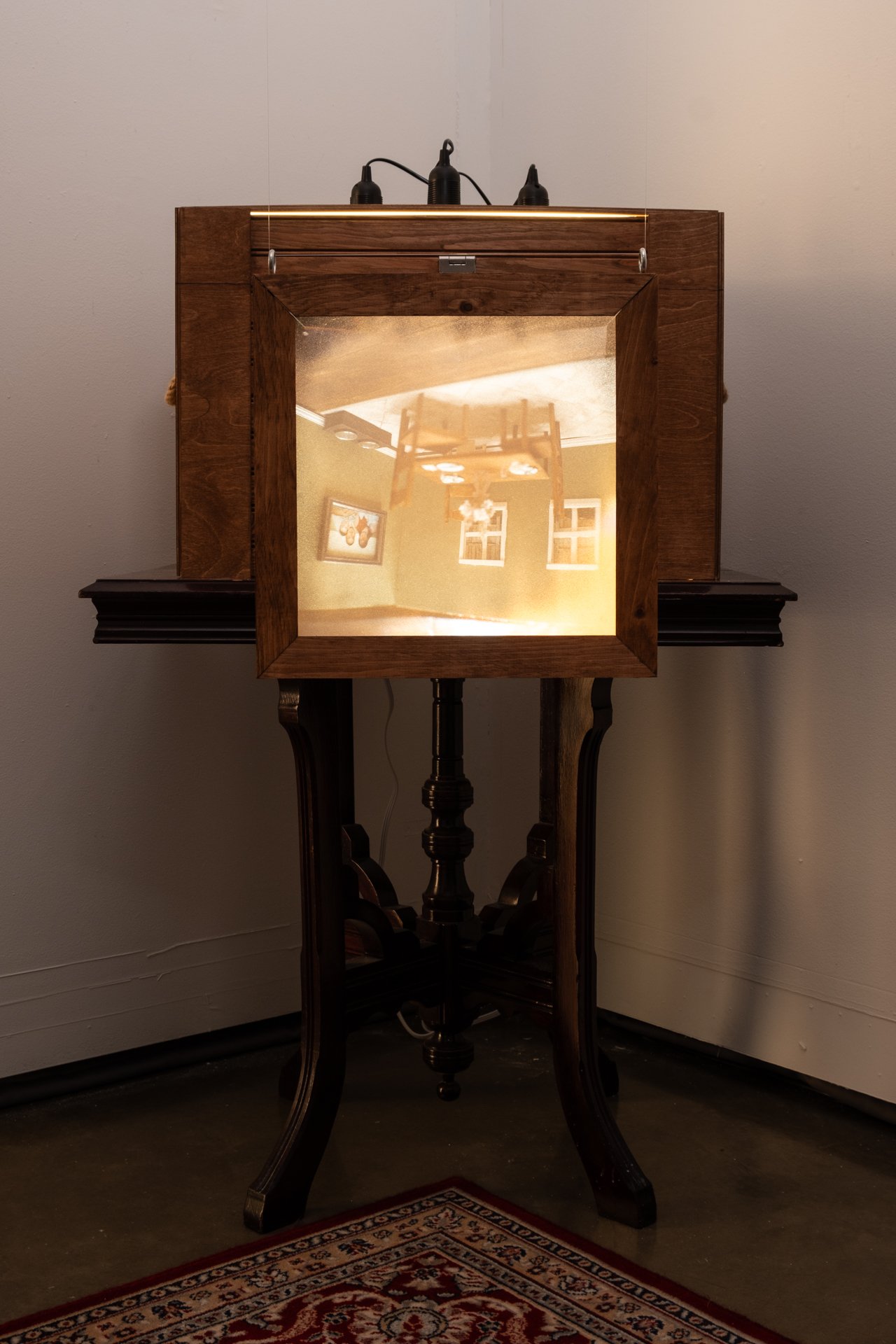WHAT WE HOPE TO SEE
On this page, each chest contains models of scenes that are illuminated and subsequently projected onto frosted glass without using a projector. This process is known as a pinhole image projection, with the most common example being how an eye functions. Each image projection only relays the light coming off of the models, which gives the models their shape, color, and luminosity. Without light, there is no indication for objects to exist; only by trusting the light can we confirm their existence.
The image projections depict scenes from my potential future, containing different aspects of my childhood, forming new places and experiences for my future family. These places function as blueprints, and by meticulously building each space, I can seize control and create environments that fit my idea of “home.”
“While the artists in “Transit” embody cosmopolitan ideals, some of their works hit closer to home. Connor Gagne’s Pinhole Chests looks to the past for inspiration: For this spatial project, the artist created four vignettes: dollhouse sculptures of modest rooms. He then projects these images using a camera obscura. The inverted image suggests a dream logic: Where a viewer might want to examine the miniature sculpture for its impressive detailing, instead the inverted image acts as a barrier, forcing the viewer to see it as a vision instead. It’s a sculpture that strives to be a mirage. Gagne’s project reaches for the cinematic magic of Gregory Crewdson but also inhabits the rustic lyricism of Andrew Wyeth.”
-Kriston Capps in his essay “Transit”.














